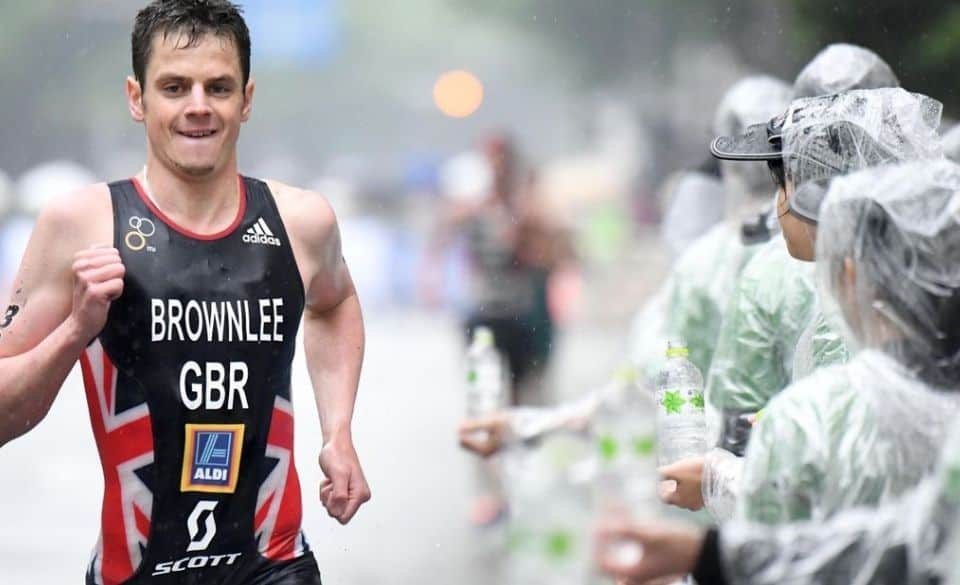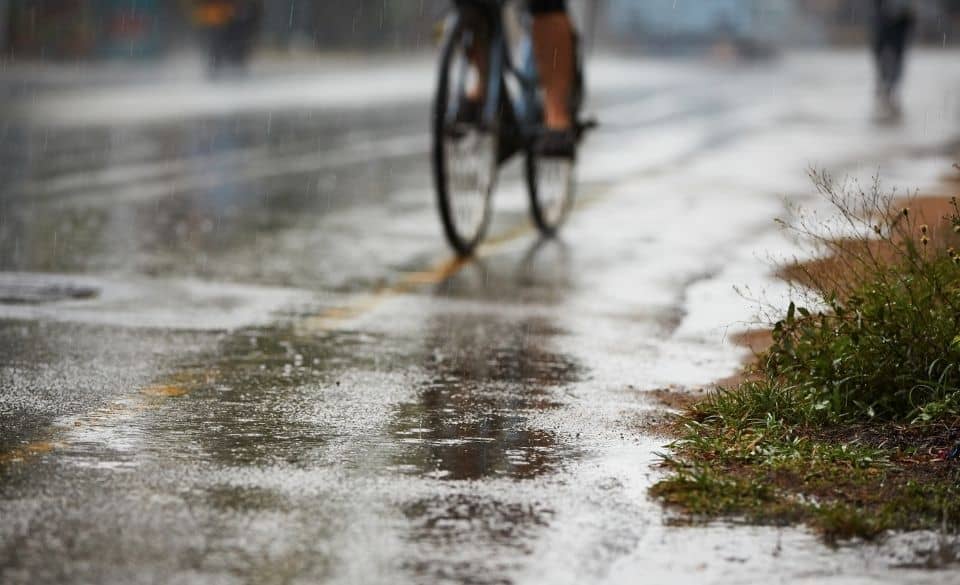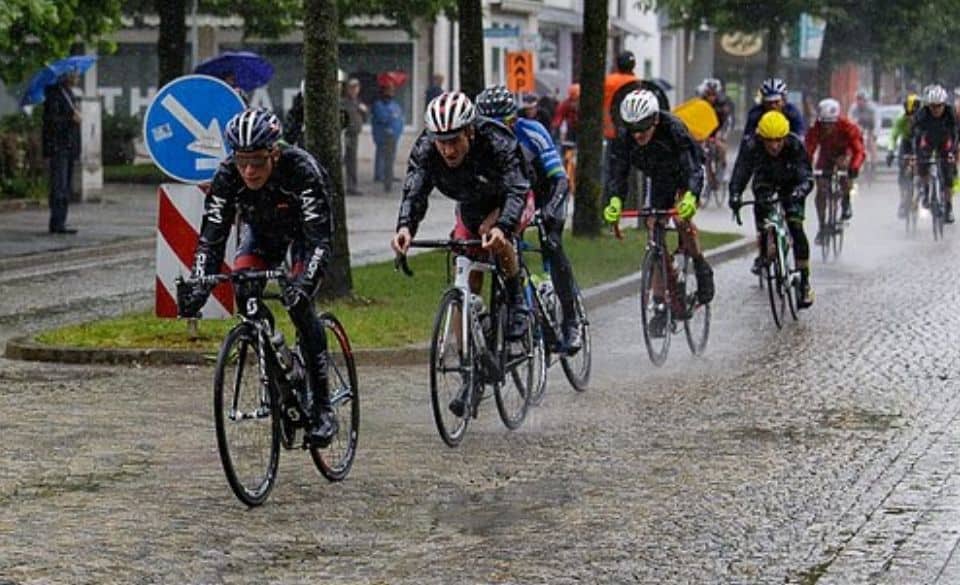
Doing Triathlon In The Rain – UPDATED 2021 – A Complete Guide
Page Contents
Even though most of us love warm weather and dry conditions, sometimes you may be unlucky and have to complete a triathlon in the rain.
For some people, competing in wet doesn’t bother them at all. However, for some, competing in wet conditions can cause a lack of performance. So what can you do about wet conditions? Is there any way you can prepare yourself for doing a triathlon in the rain?
Doing Triathlon In The Rain – A Complete Guide
Since your more likely to compete in dry conditions, many people think there is no need to train for a triathlon in the rain. However, this is the wrong advice. It is important to familiarize yourself with different conditions that you may experience on race day. Knowing this, how do your prepare for such conditions?
The most crucial factor in preparing for such conditions is not to shy away from training during rainy days. However, don’t push the limits and head out in thunderstorms and lightning.
Training in drizzle or even a steady rain can help you get used to such conditions and learn to handle the bike correctly when the roads are wet.
During these wet training days, it is an important time to look at your nutrition strategy. This is because the temperature usually drops, and the body needs more energy to keep moving forward. So, knowing how and when to increase your nutrition intake will pay dividends when the rain starts falling.
Just like your nutrition, your gear and clothing will need some adjustments. If you know the weather is going to turn foul during an event it is wise to prepare before the start of the event. That could mean placing a lightweight jacket in transition or wearing a short sleeve tri suit rather than and sleeveless model. Either way, it is important to make sure you stay warm during the event and prepare accordingly.
During the event, you must pace yourself to the conditions. That means slowing down on the bike around corners and stay away from the slippery white lines. While you may just think you need to be careful on the bike, it’s not uncommon to see triathletes slipping out around a corner when running.
Triathlon Rain Jackets & Other Gears
Luckily when the weather turns bad there are many triathlon rain jackets and other gear suitable for wet conditions. However, if you are competing in a half or full ironman, you probably won’t be wearing a rain jacket. Luckily there are other clothing available on the market that can help keep you somewhat dry and warm. These include undershirts, Gilet’s (cycling vest), and arm warmers. All of these products can help keep your core temperature stable and help to fend off light rain.
Picking the right triathlon gear for the conditions requires some trial and error though, as you won’t want to remove and put on clothing constantly throughout the race. A good strategy is to include numerous types of clothing in your transition bag if you know the conditions will be wet. This will help you make changes to your gear based on the weather conditions.

Bike Racing In The Rain – What You Should Know?
One of the most dangerous aspects of cycling is the rain. There are certain tips you should follow when bike racing in the rain as well as training. These include:
– Slowing down around corners
– Not following riders too close
– Wear clear sunglasses or a cycling cap
– Stay warm by adding require clothing for the conditions
– If conditions are bad change tires.
– Don’t forget to hydrate
Speed is a key factor in stay safe on the bike in the rain, this means if your bike racing in the rain, give the cyclist in front of you a little more room than you would do in dry conditions. For triathlon, this is something you won’t need to think about unless you are competing in draft-legal events. The extra room you leave will give your brakes enough time to grip, as the wet conditions often affect braking performance.
Just like brakes, tires play a strong role in wet conditions. By dropping your tire pressure you will provide better contact to the road. However, if the conditions are really bad it is wise to change out tires to something suited more to the conditions.
Other things like sunglasses or a cycling cap can also benefit you in wet conditions. Both provide an excellent way of protecting your eyes from water spraying up from the road or from the rider in front of you.
To finish it off, don’t forget to hydrate properly. Remember just because the conditions are wet and most probably the temperature has dropped, it is still important to hydrate. Too many athletes forget to drink in such conditions and their performance suffers because of it.

Cycling Training In The Rain
Just like bike racing in the rain, training in wet weather should follow the same protocol. That means keeping more distance from riders in your group and decreasing your speed around corners.
Another important thing to consider when riding in the rain is white lines. White lines can often get slippery and dangerous when wet. So make sure not to make any sudden turns while crossing a white line on the road.
For the most part, people struggle with getting out training in the rain, but if you are wrapped up warm and finally out in the conditions, it makes life much easier. Just remember to play it safe and keep speed to a minimum, the last thing you want is to affect your training with a crash!



